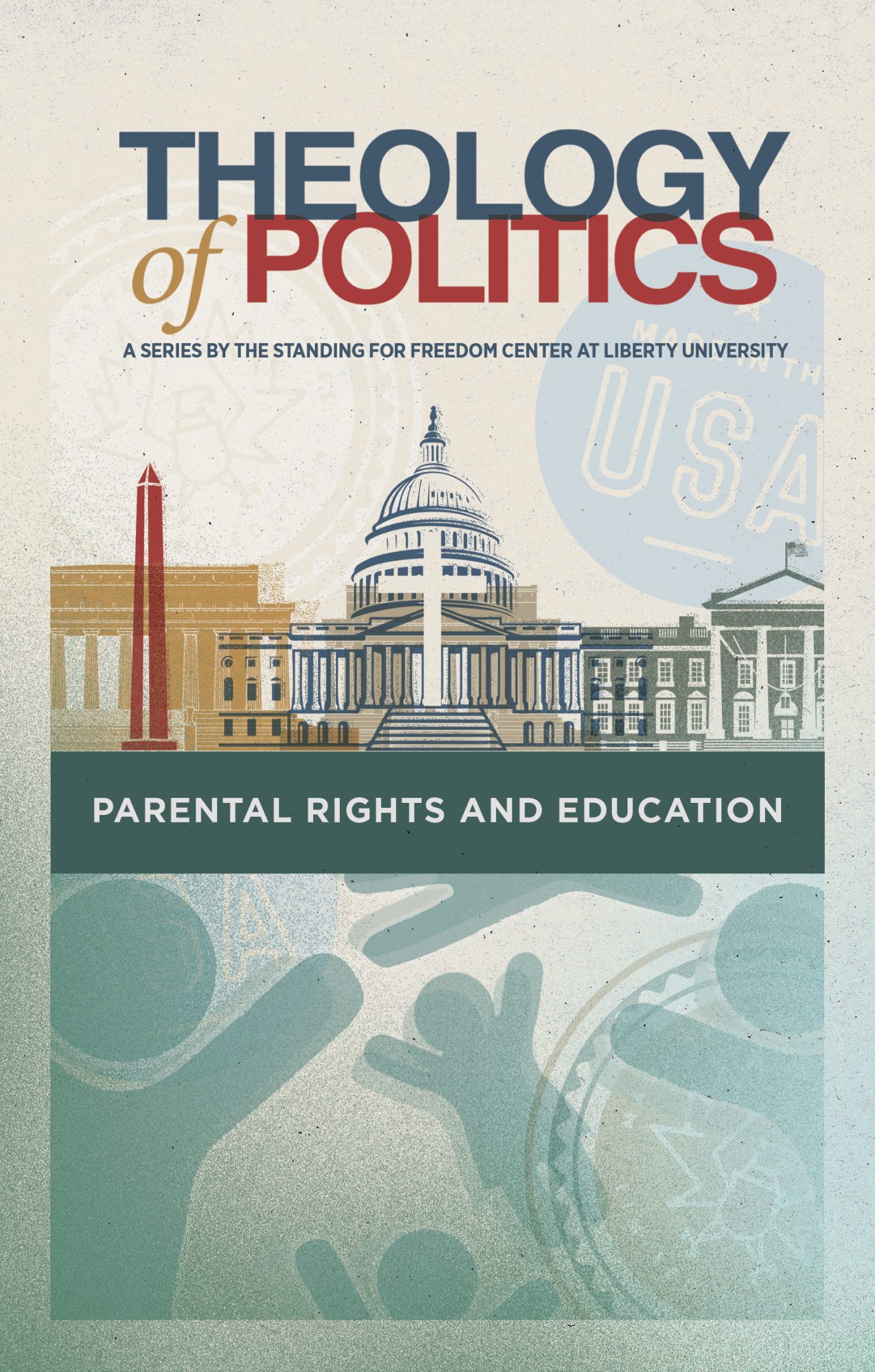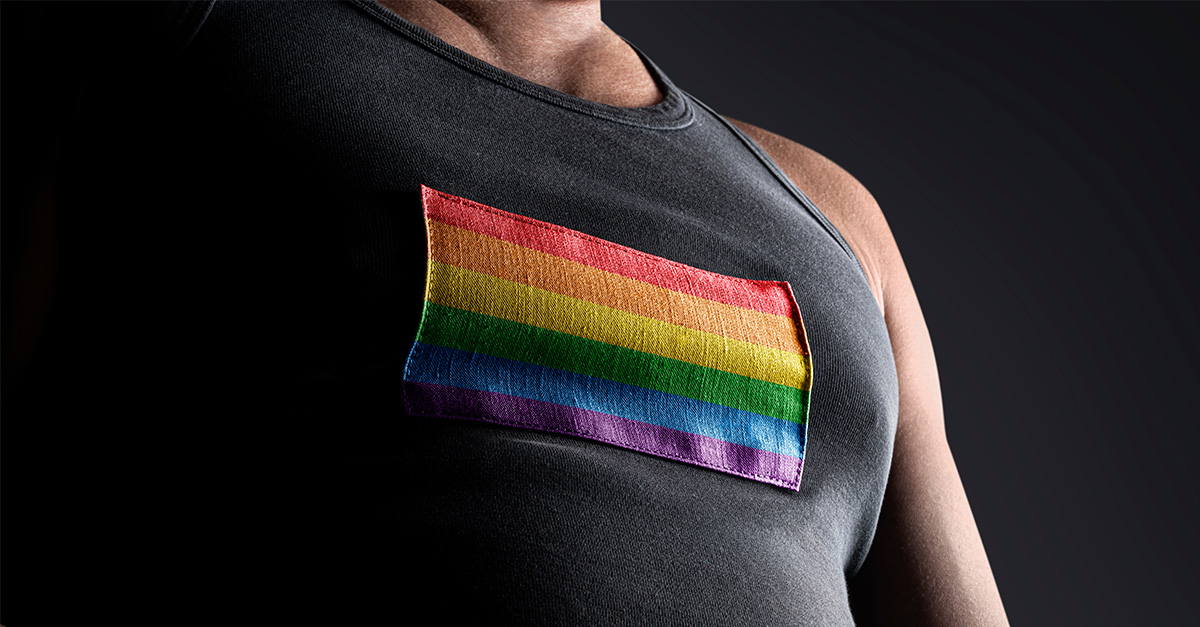


Get a free copy of Parental Rights & Education when you subscribe to our newsletter!

“Far from being true to themselves, transitioners are actively fighting against, and undertaking efforts to destroy, who they truly are — either a biological male or a biological female. Their nature cannot ultimately be controverted, no matter how hard they try.”
–WILLIAM WOLFE
This is the first article in a three-part series exposing one of the most fundamental lies of the transgender agenda and providing a biblically-based, Christian worldview-informed response. You can read part 2 here and part 3 here.
To help Christians (and truth-seekers and free-thinkers of any background) better understand what is really happening with transgender ideology and practice, I have put together a three-part series on the topic.
This first article provides an introduction and addresses one of the most pernicious lies of the transgender movement — the promise of “self-actualization.” The second part addresses how, instead of delivering on this false promise, transgenderism is, in fact, an attempt at self-annihilation. Finally, the third installment provides Christians a biblically-based way to counter transgender ideology, practice, and temptations.
“I am a woman trapped in a man’s body.”
Taken at face value, this is an utterly amazing — almost laughable — statement. As Carl Trueman prosecutes this truth-bending statement in The Rise and Triumph of the Modern Self: Cultural Amnesia, Expressive Individualism, and the Road to the Sexual Revolution, he argues that such an outlandish claim “has come to be regarded as coherent and meaningful…[and] not only meaningful but so significant that to deny it or question it in some way is to reveal oneself as stupid, immoral, or subject to yet another irrational phobia.”[1]
If someone had made a similar claim a mere 50 years ago, far from being affirmed, they would have been encouraged to seek psychiatric help and possibly be diagnosed with gender identity disorder (to be officially re-termed “gender dysphoria” in 2013). In 2023, this statement is not only accepted as entirely coherent, but our society demands that such pronouncements be treated as “brave” and a “first step” towards living an “authentic” life as a transgender individual.
Just consider the response to Bruce Jenner’s announcement in 2015 that he was no longer “Bruce” but “Caitlyn,” and how becoming Caitlyn freed him from living a lie: “Bruce Jenner, she said, was ‘always telling lies.’ Caitlyn Jenner, she said, ‘doesn’t have any lies.’”[2]
Even more troubling for all rational, truth-telling people (and for those who adhere to a religion with clear teachings on the nature of men and women), transgender ideology does not just ask to be accepted; no, it demands to be celebrated. This has profound implications for Christian sexual ethics.
In this series, I use a definition of “transgenderism” provided by Andrew Walker, who explains that it is an “umbrella term for the state or condition of identifying or expressing a gender identity that does not match a person’s physical/genetic sex.”[3]
Now, I want to acknowledge that there is an available and ever-growing body of thoughtful, biblically-based resources aimed at equipping Christians to confront the rapid proliferation of this phenomenon. Many of them, however, focus on the mental, psychological, and spiritual dimensions of transgender ideology. When they do discuss the more physical aspects, such as gender reassignment surgery, they tend to focus on the horrific physical effects of the surgery (which is appropriate), critique it as an example of Gnosticism, and point to how it is a failure to “glorify God in your body” (1 Cor. 6:20, NIV).[4]
But what I want to consider in this three-part series is a foundational aspect of transgenderism that is, arguably, at the root of the entire misguided endeavor: the effort to “change one’s sex.”
While Trueman documents various factors which gave rise to the age of “psychological man and expressive individualism,” in which “the inner psychological life of the individual is sovereign” and “identity becomes as potentially unlimited as the human imagination,” I want to examine what, exactly, is happening when a man who has decided he is a woman (or vice versa) begins to act on this belief in the physical world.[5]
What happens when a man undertakes efforts to physically present himself as a woman or even reshape his body to mimic that of a woman’s body? Ultimately, transgenderism and gender transition efforts (chemical or physical) are not steps of self-actualization but self-annihilation.
How so? Because such actions are, in essence, a sincere-though-futile attempt to destroy one’s nature, either as a man or a woman. It is an attempt to play God, to refashion oneself into one’s own image, rather than accepting the dual natural manifestations of the image of God in humanity, as men and women.
And this is truly an impossible task; one might hire a doctor to surgically destroy his or her external reproductive organs, but one cannot wipe away the chromosomal XX or XY stamp in his or her DNA. Putting it bluntly, Ryan Anderson states, “People who have sex reassignment surgery do not become the opposite sex.”[6]
Thus, if the heart of faithful Christian sexual ethics is to live according to our true nature — in union with Christ, albeit fallen yet being redeemed by grace, embracing the sexed nature of our embodiment — then transgenderism is contrary to nature. And because it is contrary to nature, it is a misguided, disastrous, and ultimately futile attempt to engage in self-annihilation. The goal of the Christian life, after all, is not transition but rather transformation “by the renewing of your mind” so we “will be able to test and approve what God’s will is—his good, pleasing and perfect will” (Rom. 12:2, NIV).
With that introduction setting the stage, it’s important to recognize that one of the most attractive features (lies) of transgender ideology is how it offers “self-fulfillment” and “self-actualization” to suffering people. In many ways, the entire concept of “gender ideology” is built on this premise — that an individual may have a subjective sense of their “gender” which is different from and/or contrary to their biological “sex”; thus, in order to live a happy life, they should embrace the perceived gender identity as their true self and take whatever steps may be necessary to manifest that gender identity into physical reality.
As recounted by Sharon James in Gender Ideology, a popular book aimed at youth known as The Gender Fairy claims that “only you know whether you are a boy or a girl. No one can tell you.” And that “some children will realize their true identity is not the gender they were assigned at birth.”[7]
Nancy Pearcey, author of Love Thy Body: Answering Hard Questions about Life and Sexuality, also highlights how “the transgender script tells young people that embracing their cross-gender feelings will liberate them to be their authentic self.”[8] Or consider that, as early as 2014, Facebook added “56 new ways for users to describe their gender,” explaining that “the new options allow the user to ‘feel comfortable being your true, authentic self.’”[9]
Anderson echoes this, noting the philosophical nature of the proposition. He asserts that “the rhetoric of the transgender moment drips with ontological assertions: People are the gender they prefer to be. That’s the claim.”[10]
That may be the claim, but is it the reality? In a gripping personal essay, a regretful, reverted male-to-female transitioner recounts,
“When I expressed doubts, I was reassured that all transgender people sometimes feel like they aren’t really transgender and that contentment waited at the end of the line if I just stuck with it.”[11]
As we will see in part 2 of this series, that was not to be the case.
Despite the activists’ promises, why does transgenderism fail to bring peace?
Why is the rate of “lifetime suicide attempts across all ages of transgender individuals at 41%, compared to under 5% in the overall human population?”[12] Why do other studies show that even those who undergo gender reassignment surgery — the “end of the line” for transgender self-actualization — still have “numerous problems that persisted after reassignment” and that researchers found “substantially higher rates of overall mortality, death from…suicide, suicide attempts and psychiatric hospitalizations in sex-reassigned transsexual individuals compared to a healthy control population?”[13]
Why? Far from being true to themselves, transitioners are actively fighting against, and undertaking efforts to destroy, who they truly are — either a biological male or a biological female. Their nature cannot ultimately be controverted, no matter how hard they try.
To understand this further, we will next turn to a lesson from Professor J. Budziszewski and the natural law — which I will cover in part 2 of this series, found here.
Follow William on Twitter! @William_E_Wolfe
Ready to dive deeper into the intersection of faith and policy? Head over to our Theology of Politics series page where we’ve published several long-form pieces that will help Christians navigate where their faith should direct them on political issues.
[1] Carl R. Trueman, The Rise and Triumph of the Modern Self: Cultural Amnesia, Expressive Individualism, and the Road to Sexual Revolution (Wheaton, IL: Crossway, 2020), 19.
[2] Buzz Bissinger, “Caitlyn Jenner: The Full Story,” Vanity Fair, accessed May 25, 2022, https://www.vanityfair.com/hollywood/2015/06/caitlyn-jenner-bruce-cover-annie-leibovitz.
[3] Andrew Walker, God and the Transgender Debate: What Does the Bible Actually Say About Gender Identity? 2nd ed. (India: The Good Book Company, 2022), 200.
[4] J. Alan Branch, Affirming God’s Image: Addressing the Transgender Question with Science and Scripture (Bellingham, WA: Lexham Press, 2019), 108.
[5] Trueman, The Rise and Triumph of the Modern Self, 46,50.
[6] Ryan T. Anderson, When Harry Became Sally: Responding to the Transgender Moment (New York: Encounter Books, 2018), 100.
[7] Sharon James, Gender Ideology: What Do Christians Need to Know? (Great Britain: Christian Focus Publications Ltd, 2019), 19-20.
[8] Nancy R. Pearcey, Love Thy Body: Answering Hard Questions About Life and Sexuality (Grand Rapids, MI: Baker Books, 2018), 197.
[9] Lawrence S. Mayer and Paul R. McHugh, “Sexuality and Gender: Findings from the Biological, Psychological, and Social Sciences,” The New Atlantis: A Journal of Modern Technology and Society, Special Report, no. 50 (2016), 88.
[10] Anderson, When Harry Became Sally, 29.
[11] Steven A. Richards, “How I was Trapped by Gender Ideology,” Washington Examiner, accessed May 25, 2022, https://www.washingtonexaminer.com/restoring-america/patriotism-unity/how-i-was-trapped-by-gender-ideology.
[12] Mayer and McHugh, “Sexuality and Gender,” 8.
[13] Branch, Affirming God’s Image, 104-105.

Notifications